I passed UX whiteboard interview, here’s you can learn
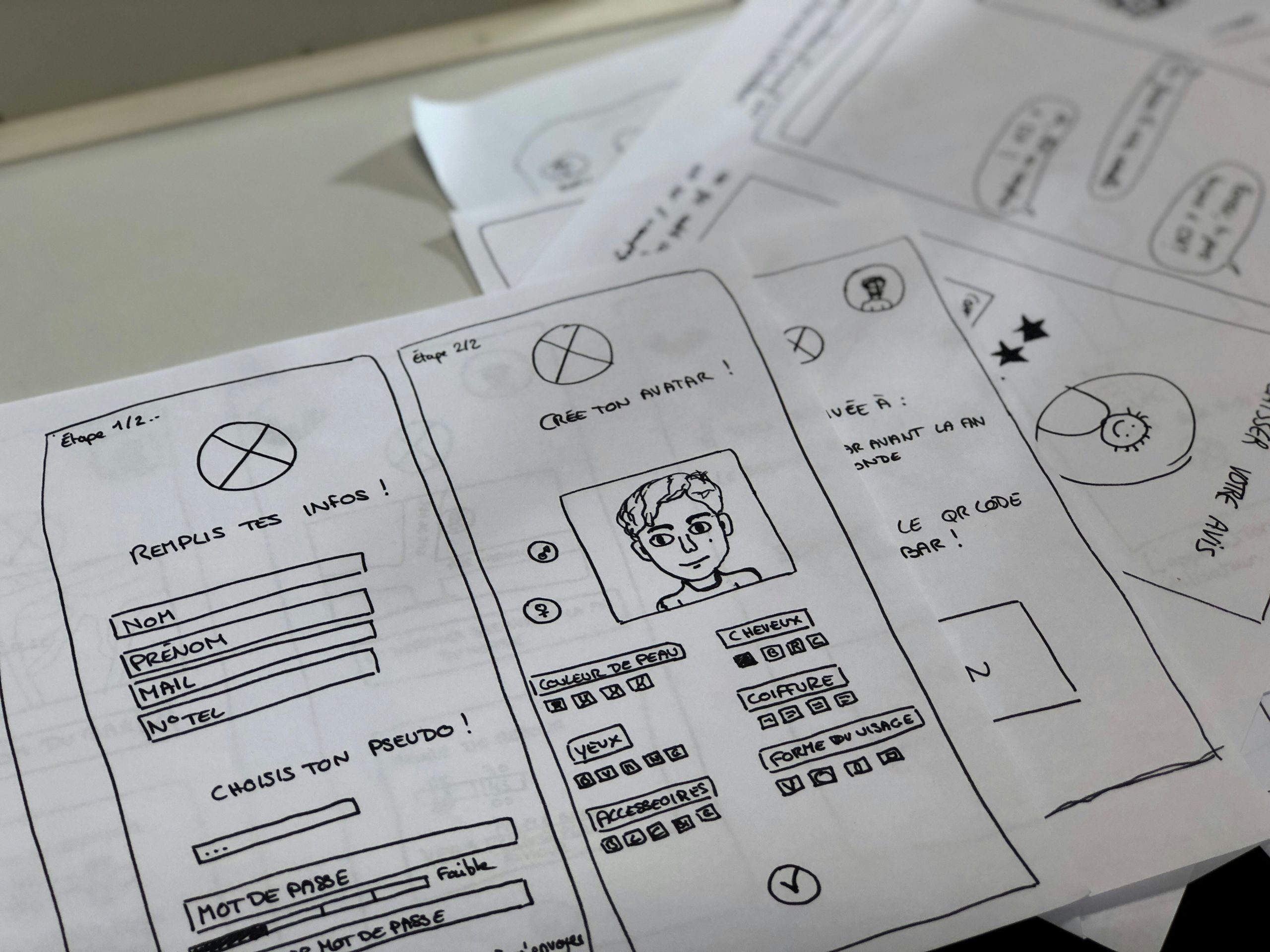
No matter what position you are in and want to become a candidate that stands out to interviewers, acing the UX Whiteboard Interview is a crucial step towards achieving your goal.
For the past few weeks, I had a Singapore Government project and they required me for a Whiteboarding session, it was my first time doing a whiteboarding session. To prepare for this new experience, I spent countless hours researching and learning from other designers on YouTube and blogs. Here are the lessons and experiences I gained, what might surprise you, what mistakes to avoid, and how to get over pressure. Let’s go
1. What is a Whiteboard Challenge
Let’s start with a hypothetical scenario: You used to receive requests from clients and resolve them within weeks or months, but now all you have is:
You have 30 minutes to read the request and write down what you think on this board and present your solution. Make sense?
So, Whiteboard challenges are commonly used to assess an applicant’s problem-solving approach and design process. During the challenge, the candidate is usually expected to explain their thought process, discuss their approach, and write or draw their solution on the whiteboard. Interviewers may ask questions and provide feedback to evaluate candidates’ ability to think critically and adapt their approach.
Potential interviewers want to see that you can:
- Think through problems logically and critically
- Design with the user in mind
- Collaborate with team members
- Incorporate constructive feedback
- Handle and manage stress
2. How did I approach
Knowing that my interviewer could prepare any problem or case for me to solve, I couldn’t prepare anything specific in advance but I could prepare a set of questions I’ll ask to help me get to the bottom of the challenge.
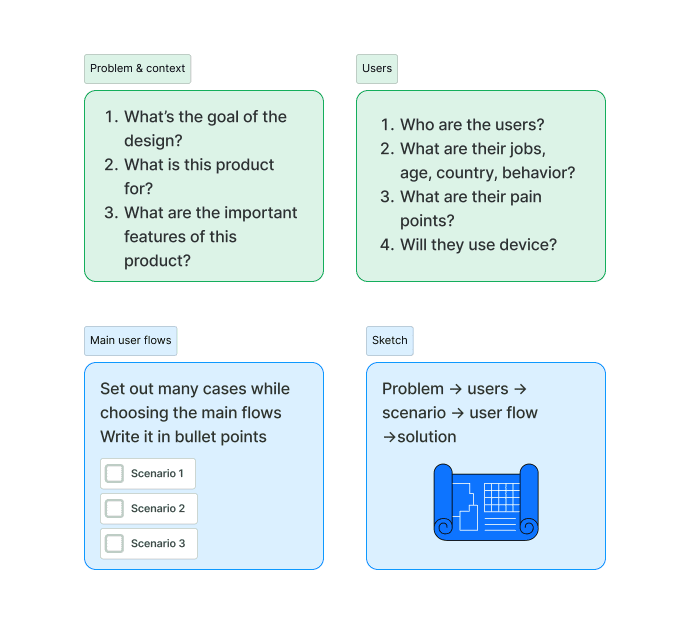
As interviewers may present unexpected problems for you to tackle, these questions are designed to assist in understanding the challenge. While it may not be feasible to ask every question due to time constraints, you can select those most pertinent to your task to develop a comprehensive solution.
Alternatively, you can utilize the 5W’s and 1H method—Who, What, When, Where, Why, How—to ensure you have all necessary information to proceed smoothly, without relying on memorized question sets disrupting your problem-solving flow.
To help you imagine more intuitively, I will clearly explain the steps to take through the problem I encountered that day
Design a media content management dashboard for a healthcare application, helping admins to effectively manage, create, and edit content
Time frame: 30-minute challenge; 10 minutes Q&A at the end
Step 1: Understanding the Problem & Context (5 minutes)
- What’s the goal of the design?
- What is this product for?
- What are the important features of this product?
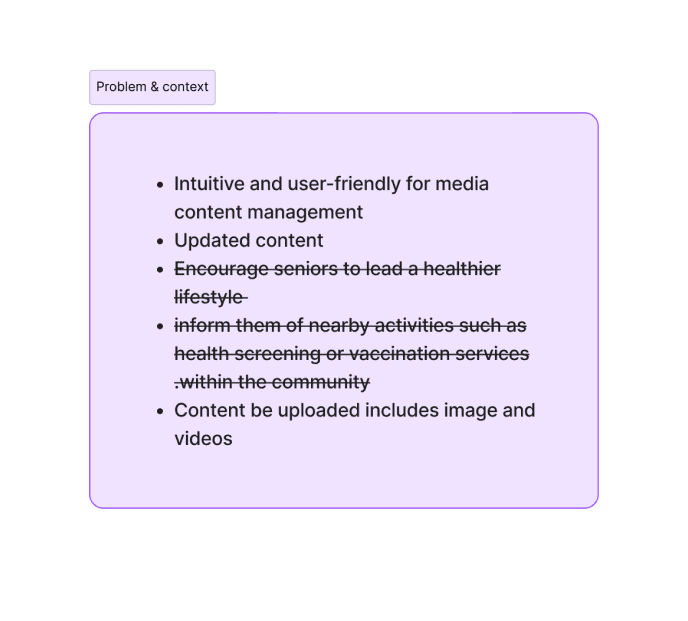
Step 1.5: Understanding the users (5 minutes)
- Who are the users?
- What are their need?
- What are their pain points?
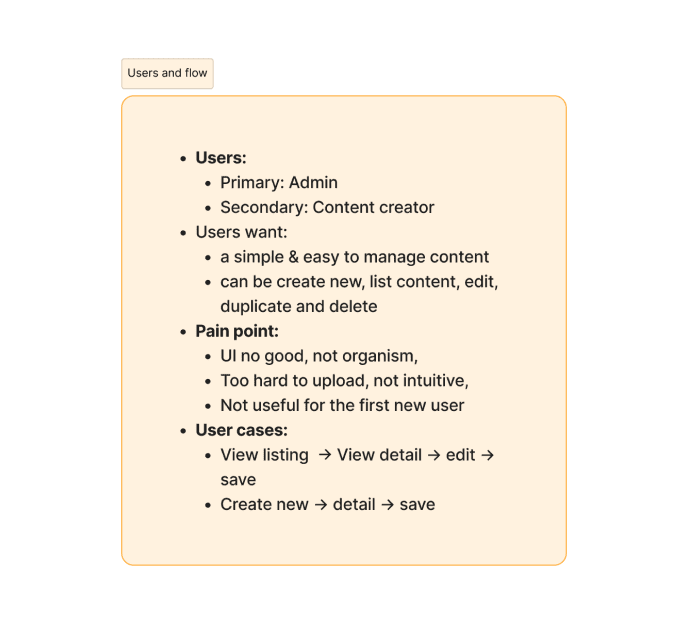
Step 2: Make a decision on which personas or assumptions you are moving forward with (5 minutes)
If the interviewer hasn’t specified the users or hasn’t provided ample information, use your experience to make assumptions and generate scenarios, selecting the primary course of action based on your past encounters.
Our persona for the current prompt:
- Name: Liam
- Age: 24- 35 (assumption–> know how to use technology a little but don’t want a complicated system)
- Occupation: Content manager
- Goal: A simple dashboard to view posts of products and write a post easy
Step 3: Main user flow (5 minutes)
Narrate the journey of the user chosen for focus in Step 2, detailing their primary flow for this experience.
Enumerate the steps (1, 2, 3…) to facilitate easy reference to their user journey when outlining solutions in the subsequent step.
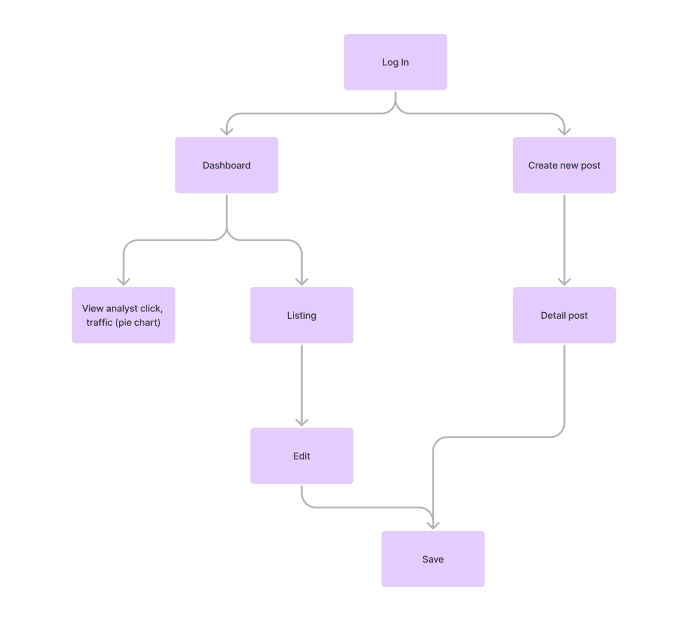
Step 4: Sketch Out Some Solutions (10 minutes)
- You will not have time to sketch out everything, choose the critical screens and check in with your interviewers with “Since we have a time limit, I’ll have to sketch out <screen from flow 3>, <screen from flow 5>, screen from flow 7>. Is that alright?”
- Sketch out some wireframes or solutions based on your main user flow from Step 3.
- Draw it out clearly and label your drawings.
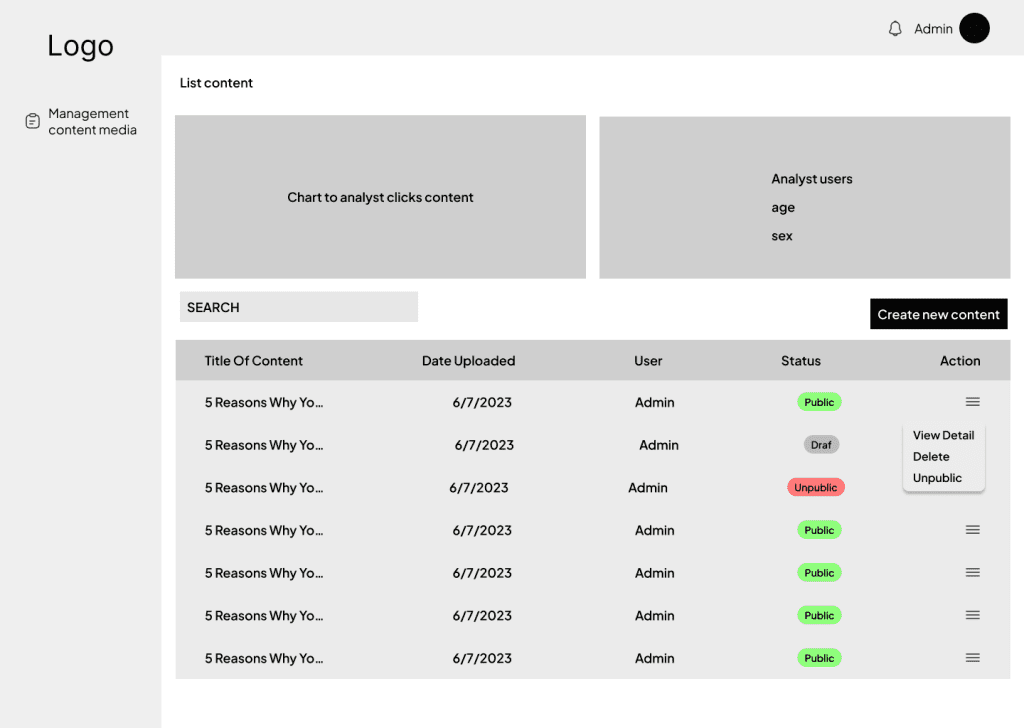
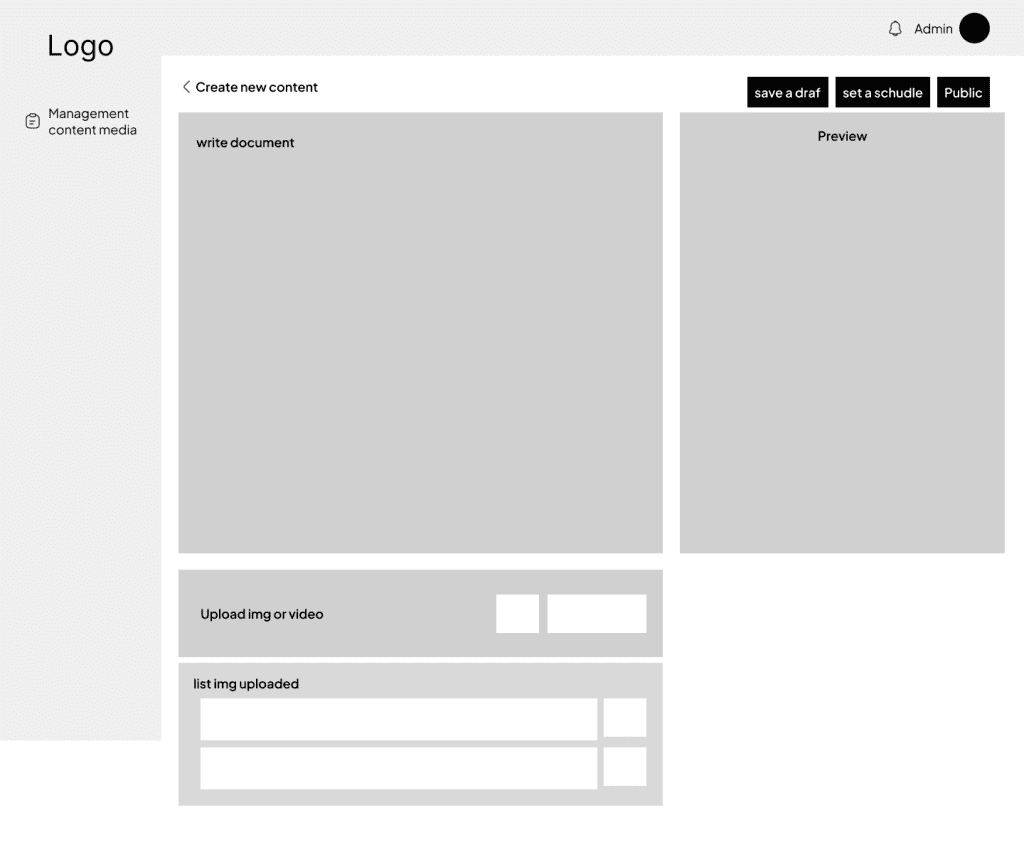
Bonus (If you have time!)
Suggest alternative use cases to show that you consider other factors. For example, accessibility considerations, other ideas, or situational use cases (What if the user is in <a different environment> instead?)
In the end
Some methods I have applied and learned about before are:
- Fast-thinking methodology (agile methodology, design thinking, lean methodology, Six Sigma, critical thinking)
- Time management
- Communication Skills
- Stress management
It might feel overwhelming to remember and jot down all these details within a 30-minute timeframe. However, having a coherent flow to explain can significantly enhance the presentation’s smoothness.
Remember, perfection isn’t attainable, especially within such a short timeframe. Remain receptive to questions and feedback from your interviewers, they’re navigating through a lot of information as well.
Lastly, the more you practice whiteboarding, the more proficient you’ll become. So, take a deep breath, exude confidence, pick up a marker, and start honing your skills. Experiment with challenges from a random generator or tackle predefined ones. You’ve got this!

Temp Mail at 9:50 am, August 5, 2024 -
I was just as captivated by your creations as I was. The drawing you’ve created is stunning, and the writing you’ve done is sophisticated. However, your remarks indicate that you are worried about the possibility of engaging in something that may be seen as dubious. I’ll be able to resolve this quickly.
Temp Mail at 8:52 pm, August 7, 2024 -
I simply could not go away your web site prior to suggesting that I really enjoyed the standard info a person supply on your guests Is going to be back incessantly to investigate crosscheck new posts.
Temp Mail at 3:56 am, August 8, 2024 -
My brother suggested I might like this website He was totally right This post actually made my day You cannt imagine just how much time I had spent for this information Thanks.
URL Shortener at 9:01 am, September 1, 2024 -
Hi, I’m Jack. Your website has become my go-to destination for expert advice and knowledge. Keep up the fantastic work!
Auto Glass Replacement Sanford NC at 6:36 am, March 2, 2025 -
The creativity and intelligence shine through this post. Amazing job!